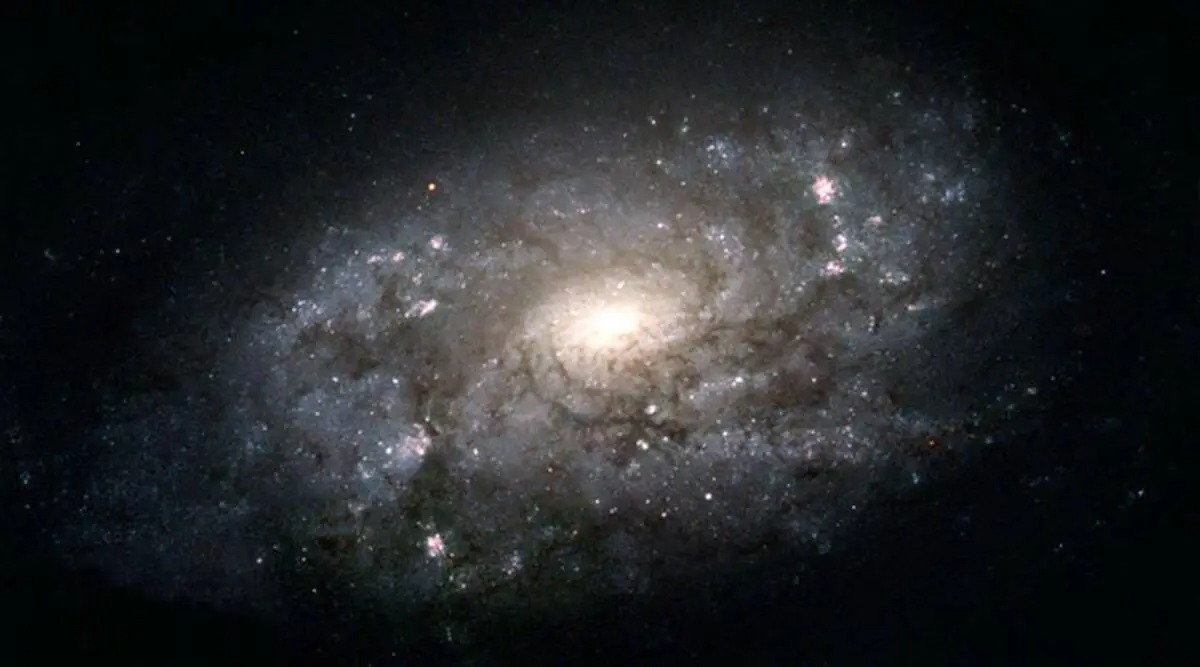 Big galaxies, including our Milky Way, host a supermassive black hole which weighs anywhere from a few millions to billions of times that of the solar mass. (Representational)
Big galaxies, including our Milky Way, host a supermassive black hole which weighs anywhere from a few millions to billions of times that of the solar mass. (Representational)A massive and unexplained burst from a galaxy located 236 million light years away has now been linked to the possible reversal of magnetic fields of the disc surrounding the supermassive blackhole sitting in its centre.
Reversal of magnetic poles for the earth, sun and planetary bodies is a known phenomenon. While the sun’s poles flip approximately after every 11 years, the same fixed time period cannot be predicted with the exact surety with respect to earth.
Big galaxies, including our Milky Way, host a supermassive black hole which weighs anywhere from a few millions to billions of times that of the solar mass. When any matter falls inward, it first gathers as a flattened structure called an accretion disc. As the material matter increase, they begin to slowly swirl inward. In the process, they heat up and emit light streams in the visible, ultra-violet and lower-energy X-ray spectra, which are caught by satellite or ground-based telescopes.
The bright burst from the galaxy identified as 1ES 1927+654 is believed to have occurred in late 2017 following which NASA scientists undertook regular observations using a battery of satellite-based and ground-based optical and radio telescopes. These included NASA’s Neil Gehrels SWIFT Observatory, the XMM-Newton satellite of the European Space Agency, Galileo National Telescope and Gran Telescopio Canarias located in the Canary Islands, Spain, the Very Long Baseline Array, in the United States of America, the Very Large Array, New Mexico and the European VLBI Network.
Best of Express Premium
In December 2017, this galaxy began brightening in the ultra-violet and visible light spectra, said NASA in its press statement.
At the same time, the X-ray emissions from this galaxy began to fast diminish and vanished completely by August 2018 and started to re-emerge in October 2018. This diminishing X-ray emissions got the scientists hooked and into a quest to track down the possible causes.
“Rapid changes in visible and ultraviolet light have been seen in a few dozen galaxies similar to this one. But this event marks the first time we’ve seen X-rays dropping out completely while the other wavelengths brighten,” said Sibasish Laha, lead author of the study published recently in The Astrophysical Journal.
Laha is a research scientist at the University of Maryland, Baltimore County, and NASA’s Goddard Space Flight Center, Maryland. He was previously with Pune-based Inter University Centre for Astronomy and Astrophysics (IUCAA).
Often near the black hole in a galaxy, a cloud of extremely hot particles known as corona produces higher-energy X-rays. The brightness of these emissions depends on the quantity of material entering the black hole.
“Lack of high energy X-rays means the coronal structure was gone,” the NASA scientists said.
As the X-rays fainted, vanished and reappeared by October 2018, the astronomers concluded that the burst was possibly due to the magnetic field reversal.
On the process of weakening field lines, co-author of the latest study and professor at University of Colorado, Mitchell Begelman, said, “The magnetic field initially weakens at the outskirts of the accretion disc, leading to greater heating and brightening in visible and UV light.”
The black hole’s magnetic field creates and sustains the corona and changes in the environment could impact its X-ray properties. After the fields reverse, the X-rays start to re-emerge, NASA scientists said.
By summer 2021, this galaxy had completely returned to its pre-eruption state, the scientists confirmed.
- The Indian Express website has been rated GREEN for its credibility and trustworthiness by Newsguard, a global service that rates news sources for their journalistic standards.

